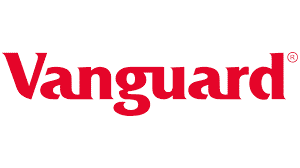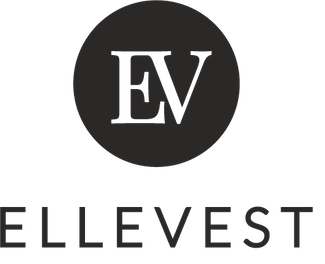Historically, one enormous advantage the wealthy had over the rest of us was access to expert investing advice. They didn’t need to be experts on stocks or market movements or investing. They could pay someone to “just take care of it.”
Today, everyone has access to expert investing advice — if not through human investing advisors, then through robo-advisors.
The Best Robo-Advisors
These are the best robo-advisors on the market right now. Each does one thing really well, whether it’s optimizing tax efficiency without a high balance requirement or keeping management fees in check.
Most of these robo-advisors are appropriate for lower-balance investors just getting started on the road to financial freedom. But most also have features that appeal to more experienced, affluent clients.
Best Overall: Vanguard Digital Advisor

Vanguard Digital Advisor is the best overall robo-advisor for U.S. investors right now. Its key selling points include:
- $3,000 minimum to invest, lower than the $50,000 minimum for Vanguard Personal Advisor Services
- Investors pay no more than $2 per $1,000 invested, per year
- Offers access to low-cost, high-performing Vanguard funds
- 0.15% average asset management fee, waived for the first 90 days
- Broadly diversified portfolios based on your investing goals and risk tolerance
- Traditional, Roth, and rollover IRAs available
Open a Vanguard Digital Advisor Account
Best for Socially Conscious Investing: Betterment

Betterment isn’t the only robo-advisor that offers socially responsible investing (ESG) options, but it does it better than any other. Choose from three Socially Responsible Investing Portfolios:
- Climate Impact, focused on companies with low carbon emissions and those funding climate-friendly projects
- Social Impact, focused on companies working to empower women and people of color
- Broad Impact, focused on companies pursuing ESG goals on multiple fronts
Additional features:
- 0.25% annual management fee or $4 monthly fee for the Digital (base) plan, depending on balance
- 0.40% management fee for the Premium plan, which includes tax-loss harvesting and more investor control over asset allocations
Best for No Management Fees: SoFi Invest
SoFi Invest does not charge a management fee of its own. You’ll still pay fund management fees that can vary depending on the composition of your portfolio, but SoFi won’t take a cut on top of that.
Additional features:
- Open an account with just $1
- Schedule one-on-one consultations with a SoFi financial advisor
- Get special rates and terms on other SoFi financial products
- Plan for multiple financial goals simultaneously
- Automatic portfolio rebalancing every quarter
Best for Managing Work-Based Retirement Accounts: Blooom
Blooom is a human-assisted robo-advisor for your employer-sponsored retirement accounts.
You don’t actually hold assets in your Blooom account. Instead, Blooom connects directly to your employer-sponsored retirement account (like a 401(k) or 457 plan) and works to optimize your holdings. For $120/year, Blooom provides a personalized fund line up that you can implement in your account.
The fee analysis-only plan is free. Blooom’s top-priced paid plan covers unlimited accounts and annual one-on-one guidance from an in-house financial advisors for $395/year.
Additional features:
- Blooom is a sworn fiduciary (Registered Investment Advisor)
- Periodic auto-rebalancing included in Advisor Access plan pricing ($245/year)
- Withdrawal alerts included in the Standard plan
Best for Tax-Loss Harvesting: Wealthfront
Wealthfront offers tax-loss harvesting on all accounts, regardless of balance. Most competitors make this feature, which periodically and strategically unwinds losing positions to reduce investors’ taxable gains, available only on higher-balance accounts.
Wealthfront does offer a premium tax optimization feature called Direct Indexing (formerly Stock-Level Tax-Loss Harvesting) on accounts with balances greater than $100,000. Its super-premium Smart Beta feature, available on accounts with balances above $500,000, has even more powerful tax optimization capabilities.
Additional features:
- 0.25% management fee on most accounts, regardless of balance
- 529 education savings accounts available
- Portfolio line of credit available on accounts with balances above $25,000 (terms apply)
- For a limited time, get $30 bonus cash when you open a Wealthfront Cash Account and fund your new account with at least $500 in new money. Terms apply.
Money Crashers, LLC receives cash compensation from Wealthfront Advisers LLC (“Wealthfront Advisers”) for each new client that applies for a Wealthfront Automated Investing Account through our links. This creates an incentive that results in a material conflict of interest. Money Crashers, LLC is not a Wealthfront Advisers client, and this is a paid endorsement. More information is available via our links to Wealthfront Advisers.
Best for Women Investors: Ellevest

Ellevest is a robo-advisor platform designed by women, for women. Its proprietary algorithm accounts for the challenges women face in the workforce and the world of finance: pay gaps, extended career breaks, longer life expectancies, and more.
Ellevest adds fee-based one-on-one coaching tailored to the needs of women clients. Top-tier Ellevest Executive plan members ($9/month) get 50% off the hourly rate.
Additional features:
- Personalized retirement savings recommendations (down to the dollar)
- Up to 5% cash-back with the Ellevest debit card
- Private wealth management for balances above $1 million
Best for Experienced Investors: M1 Finance
M1 Finance allows passive investors to choose from among dozens of prebuilt template portfolios (“expert portfolios”) and an even greater number of “custom slices,” which are sort of like mini-portfolios. It’s the best of both worlds: the option to custom-tailor your portfolio without doing the legwork to maintain it.
Additional features:
- No management fees
- Low-cost portfolio loans for qualified clients
- Available checking account with debit card
- Premium subscription (M1 Plus) with added features for $125/year
Best for a Hybrid Approach: SigFig
SigFig balances the low cost and hands-off approach of other robo-advisors with on-demand, unlimited access to human financial advisors. It does this at impressively low cost: 0.25% AUM, with your first $10,000 managed free.
Additional features:
- Build a fully personalized portfolio in minutes
- Have SigFig manage funds held with other brokerages, including Schwab and Fidelity
- Tax optimization on all accounts
- Automatic portfolio rebalancing
Best for Investing Like a Pro: Titan Invest

Titan Invest is the best robo-advisor platform for serious investors who want to take advantage of advanced, potentially market-beating strategies formerly reserved for hedge funds and professional stock traders.
Titan employs an active asset management posture that has consistently beaten Wealthfront and Betterment. You can choose from any (or all) of Titan’s four award-winning investment strategies: Flagship, Opportunities, Offshore, and Crypto.
Additional features:
- $100 minimum to open an account
- Get regular trading and investment updates from the Titan team
- Zero performance fees
- No lockup period
Methodology: How We Select the Best Robo-Advisors
We use 8 key metrics to evaluate the robo-advisors on this list. Each factor plays an important role in the account holder’s experience and overall suitability of these products.
Fund Expenses
Most of the robo-advisors on this list build out investors’ portfolios with ETFs or mutual funds. With few exceptions, these funds charge management fees to cover their own internal costs. These fees are calculated as an annualized percentage of assets invested in the fund.
Most of these fees are relatively low, if only because robo-advisors tend to shun higher-cost, actively managed funds. But even hundredths of a percentage point matter over time, so we’re biased towards robo-advisors whose component funds have very low expenses indeed.
Management Fees
This is the other direct cost you’re likely to encounter as a robo-advisor client. Most robo-advisors charge management fees on top of component funds’ fees.
Like those fund fees, robo-advisor management fees are assessed as an annualized percentage of assets invested. So if your average account balance is $50,000 this year and your robo-advisor charges a 0.25% management fee, your robo-advisor will collect a total of $125 from you over the course of the year.
Tax Optimization
Many robo-advisors utilize tax-loss harvesting to reduce account holders’ taxable gains. Some limit eligibility for tax-loss harvesting to higher-balance accounts.
Others, like category leader Wealthfront, make this capability available to all. Wealthfront does reserve its most sophisticated tax optimization strategies for accounts with balances above $500,000, however.
Available Account Types
Almost all robo-advisors offer general investing accounts (taxable brokerage accounts). Blooom, which exists only to optimize employer-sponsored plan assets, is an important exception.
Some robo-advisors go farther and offer tax-advantaged accounts like IRAs, 529 education savings plans, and custodial accounts (UTMA/UGMA accounts). Many offer joint accounts for couples as well. Our position: The more available account types, the better.
ESG Investment Options (Socially Responsible/Conscious Investing)
ESG stands for “environmental, social, and governance.” The term “ESG investing” is often used interchangeably with “socially responsible investing” and “socially conscious investing,” even though they technically describe different investing approaches.
Semantics aside, ESG or socially conscious investing options help investors express their values with their dollars. The best robo-advisors for ESG investing, like Betterment, offer multiple socially conscious portfolios that cater to distinct investor priorities: low carbon, workforce diversity, and so on.
Customization Potential
There’s some truth to the accusation that the typical robo-advisor is a cookie-cutter product that can’t cope in challenging markets. Portfolios heavily weighted toward stock index funds do great when the market goes up. When stocks fall, the story changes.
Market downturns are a fact of life and no robo-advisor (or financial advisor, for that matter) provides total protection against them.
But some, like M1 Finance, give clients more control over their portfolios’ composition, allowing them to prepare for bear markets as they see fit. And others, like Ellevest, tailor asset allocations and financial guidance to the unique needs of their customers. In Ellevest’s case, that’s professional women.
Ideal Level of Investor Sophistication
Robo-advisors are generally beginner-friendly. Some do cater to more sophisticated investors, however. M1 Finance is a good example of a robo-advisor that offers the best of both worlds: easy automation for hands-off beginners alongside near-endless customization potential.
Access to Human Advisors
Originally, robo-advisors cut human advisors out of the picture entirely. If you wanted to work with a human financial planner or wealth manager, you had to “upgrade” to a more expensive platform or hire a full-service financial advisor.
These days, the distinction is blurrier. While some robo-advisors remain purist about keeping investors away from human advisors, others have embraced a hybrid model. The best hybrids, like SigFig, do this while managing to keep fees and investment minimums low.
Become a Robo-Advisor Expert: Your Automated Investing Questions Answered
You have questions about robo-advisor apps. We have answers.
What Is a Robo-Advisor?
A robo-advisor is an automated investing platform that uses complex algorithms to build and periodically rebalance custom or semi-custom portfolios.
Most robo-advisors invest in a mix of index and sector ETFs and mutual funds. While humans build the algorithms and support the system, robo-advisors place trades without direct human input.
How Much Do Robo-Advisors Cost?
Robo-advisors charge two types of fees, one direct and one indirect.
Management Fees
The direct fee is the management fee, which the robo-advisor charges to cover its own expenses. Robo-advisors’ management fees generally come in under full-service human financial advisors’. But they do vary considerably.
Some robo-advisors charge no management fees and offer only limited flexibility. Others offer all the bells and whistles you could ask for — and charge accordingly. They also tend to require a high minimum investment, sometimes in the six figures.
As a general rule, the more flexibility and human interaction a robo-advisor offers, the higher the management fee they charge. Most offer a completely automated option at a lower price point and a human hybrid investing service for a higher cost.
Investors just starting probably don’t need much flexibility. The more wealth you have to invest, the greater your needs and the more flexibility you likely want. You may be willing to pay a higher management fee for better service.
Fund Expenses
The indirect robo-advisor fee is the sum total of fees charged by any mutual funds or ETFs the investor owns. Robo-advisors can’t directly control these fees, though they do work hard to minimize them.
Most robo-advisors use a mix of ETFs and mutual funds to build their clients’ portfolios. At the very least, they offer clients the option to invest in ETFs and mutual funds, rather than individual stocks. Though robo-advisors seek to invest in high-performing, low-cost funds, fund fees are inevitable.
How Do You Pick a Robo-Advisor?
One area of distinction among robo-advisors lies in the types of accounts they service. Rather than just a taxable brokerage account and IRA account, some robo-advisors service 529 plans, trusts, and 401(k) advising.
Higher-end robo-advisors also offer tax-loss harvesting, allowing investors to adjust their portfolios to reduce their tax bills. That’s a vital feature for higher earners.
Some robo-advisors also offer a socially conscious investing option, which is significant to many investors. Ultimately, your ideal robo-advisor comes down to your priorities and how much you have to invest.
Can You Choose the Stocks and Funds in Your Robo-Advisor Account?
Every robo-advisor gives clients some say over their investments.
Basic robo-advisors typically ask clients a few questions about their long-term goals and tolerance for investing risk, then build semi-customized portfolios based on their answers.
More sophisticated robo-advisors offer the option to invest more purposefully. For example, M1 Finance offers the option to invest in any of dozens of “custom pies,” or mini-portfolios composed of specific securities.
But if you’re really set on picking and choosing the components of your portfolio down to the individual stock level, a robo-advisor might not be the best fit for you at all. A commission-free self-directed brokerage account could be the better choice.
Fun Facts About Robo-Advisors
- Betterment was the first robo-advisor available to everyday investors. It launched in the United States in 2010.
- The theoretical basis for most robo-advisors’ investment strategies is Modern Portfolio Theory (MPT). Famed economist Harry Markowitz first described MPT in a March 1952 article in Journal of Finance.
- The finance industry ignored Markowitz’s work on MPT for decades. But by 1990, his ideas were widely accepted. That year, he shared the Nobel Prize in Economics with fellow MPT theorist William Sharpe.
- Vanguard Personal Advisor Services is the biggest robo-advisor by assets under management. It managed more than $230 billion in client assets in Q3 2021.





